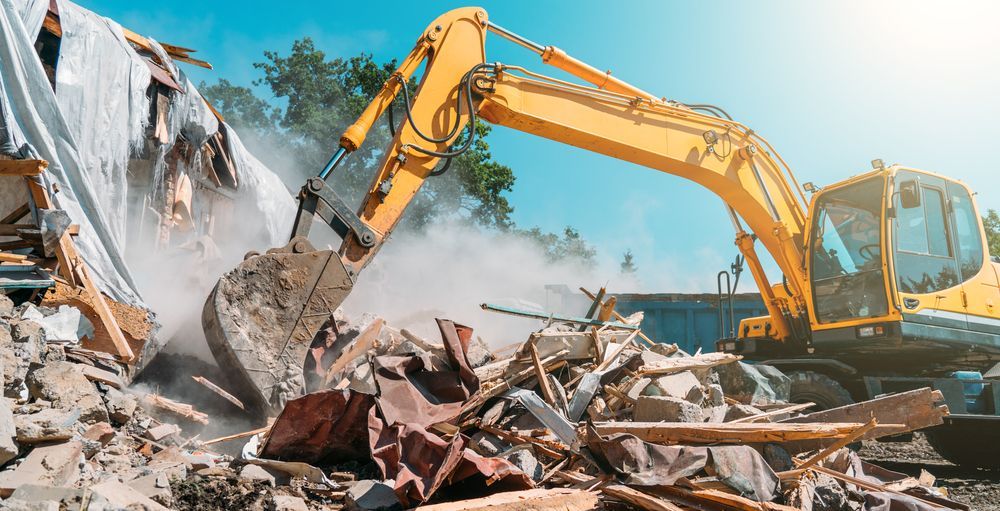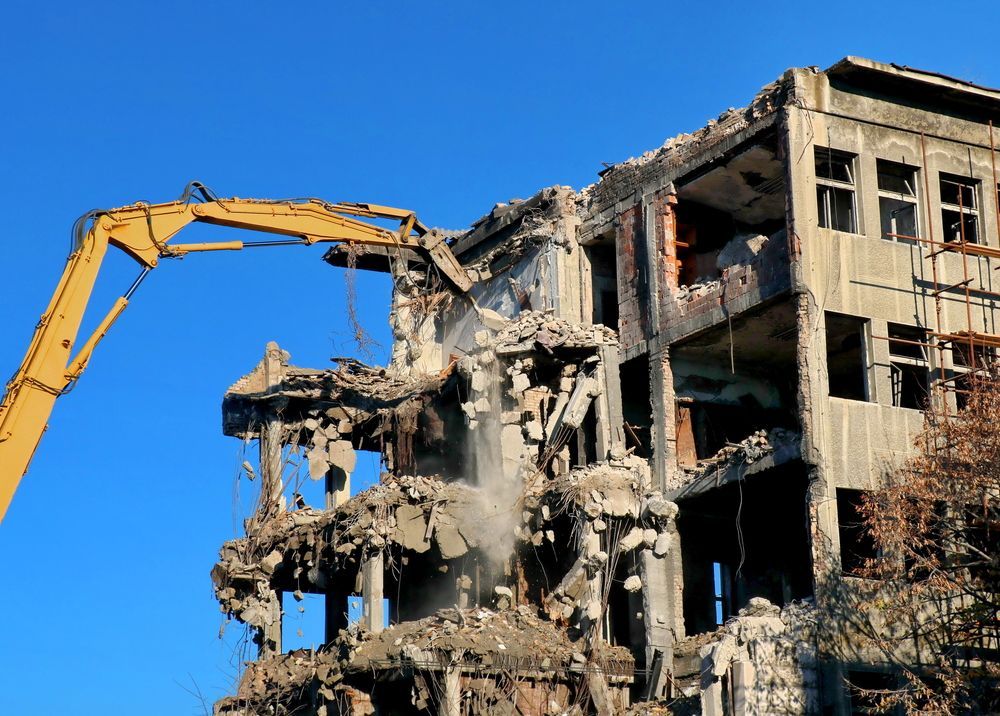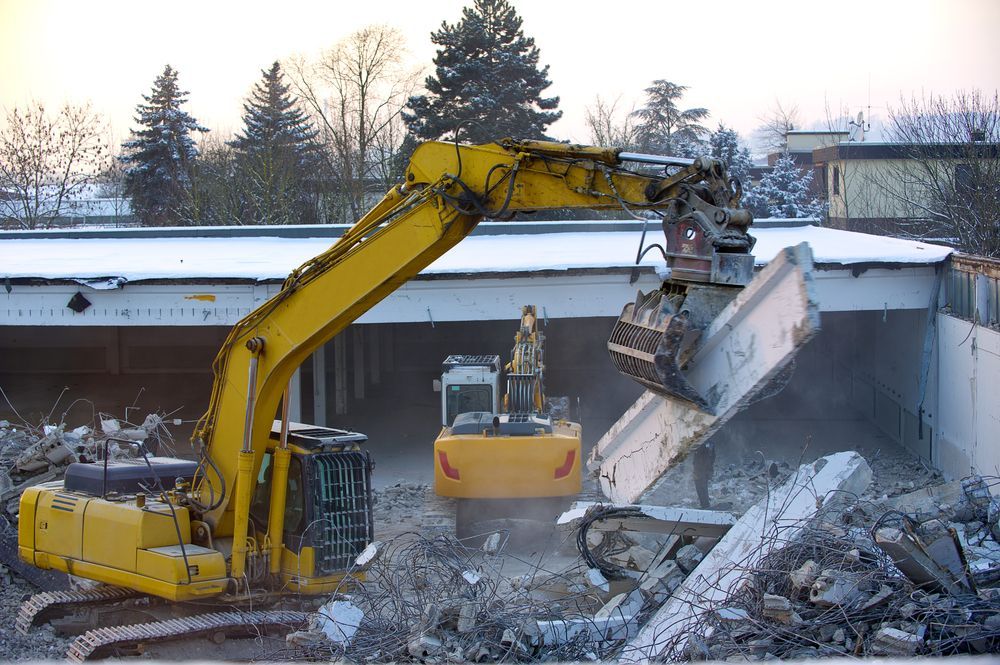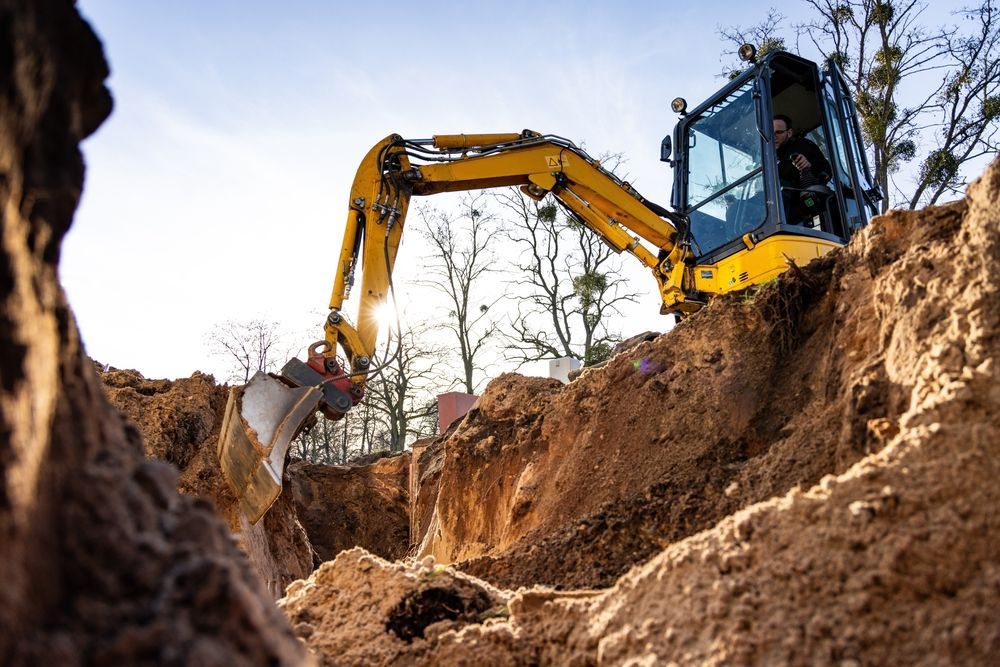
To demolish or not to demolish?
Oftentimes, when there’s a property in question, it’s much easier to demolish it and start over rather than put effort into restoring it. In fact, an estimated 200,000 to 300,000 homes are destined for the wrecking ball each year and hundreds more
commercial buildings are demolished annually throughout the United States. So just why do buildings get demolished? In this post, we’ll take a deeper dive into the reasons why property owners, managers, and developers make the decision to take down a building. Here’s a closer look:
Why Do Buildings Get Demolished?
Let’s start by discussing just why buildings get demolished. A building may be demolished for a variety of reasons. However, typically it’s done either because it makes it easier for an owner or developer to start over or because the building has become structurally unsafe. Here’s a closer look at some of the key reasons for demolishing a building:
Owner or developer preference
If a property or lot has just been purchased, the new vision may differ from the current one. For this reason, it may make sense to demolish any existing structure to make way for new development. For example, a warehouse that just changed ownership may be demolished so that luxury apartments or residential units can be constructed.
The current structure is unsafe
This is the most common reason for building demolition: safety. If a current structure poses a safety threat to other buildings in the area or people that are working or living in the area, then it’s likely to be demolished. This is especially true if inspections indicate that the building is at risk of either partial or total collapse should it be left standing.
Dated buildings that don’t meet current building codes may also be demolished, while
certain materials can be salvaged and used in a new development.
The building has incurred damage
Restore or replace? While most existing properties can be restored to pre-loss condition, if a property has incurred significant fire or water damage, or if a property was damaged by a natural disaster, it may not be able to be safely sustained. Hurricanes, floods, earthquakes and other natural disasters can take its toll on a property – sometimes to the point where they become beyond repair. We’ll touch more on this point later on in this post.
Another reason why a building may require demolition is due to neglected maintenance. If a building isn’t properly maintained, the structure could weaken and a bevy of other issues may arise.
Is Restoring or Demolishing the Right Choice?
Before we get into what situations may warrant restoration and what may
require demolition, it’s worth taking a moment to really examine what a restoration project consists of.
Restoration contractors are those who secure a property and restore it to pre-loss condition, typically after it has sustained fire damage, water damage, mold growth or a combination of all of the above. For example, after a flood, contractors will remove water from the property, take proper measures to dry it out and then work to prevent mold from growing. After a fire, contractors typically secure the property, clean it out, identify areas that are structurally compromised, and then work to deodorize and repair affected areas. Restoration contractors may even have to perform or subcontract out asbestos and lead abatement. In some cases, restoration contractors can fix issues with the structural integrity of the building or may have to remove and replace certain building materials to restore it to pre-loss condition.
Here’s a look at some considerations that should be weighed when it comes to restoring versus demolishing a property:
- Structural integrity: Structure is everything when it comes to property. In order for a building to stand, it needs a strong foundation and steel framing to hold it all in place. If any of these aspects are compromised, the building is also going to be compromised. And if the structural integrity of the building is compromised, then it’s going to be very difficult to restore. Bottom line: If structural issues are significant enough, the building is likely better to be demolished than attempted to be restored.
- Age of building: Everything has a lifespan, and commercial properties are no exception. Not only are older buildings more likely to have issues with the foundation, structure, and MEP, but they’re also less likely to be up to code. While there’s certainly a charm to older buildings, there’s also a considerable cost that comes with maintaining them over time – and this cost may be difficult to justify for too long when it can often be easier and more economical long-term to just demolish them and begin on a new property. In some cases, a building may be able to be partially demolished to make way for a new development, while maintaining some of the historical appeal through restoration.
- Overall condition of the building: As we said above, a neglected building is a building that’s difficult to justify restoring. Like an old car that you have to decide to continue to pump money into versus just buying a new one, there’s a similar dilemma between restoring or demolishing a property. And if a building is neglected and even empty, it could create more problems than it could provide benefits for the community. In some cases, neglected or unoccupied buildings may turn into places where organized crime takes place. If a building is a detriment to a city or community and there’s no owner committed to restoring it, then it makes sense to demolish it until someone purchases the property.
Alpine Demolition Service
For more information on when to restore a property and when to demolish it, contact Alpine Demolition today. As a full-service demolition company that prides itself on a safety-first mindset, we have the know-how and experience to plan your next job.
Contact us today.
3515 Stern Ave, St. Charles, IL 60174
(630) 761-0700
Office Hours
Mon - Fri: 8:00 am - 4:30 pm
Sat - Sun: Closed
Website imagined and executed by RivalMind.
Quick Links
Stay Connected with Alpine:
Sign-up to receive regular news updates from Alpine Demolition.
Newsletter Email
We will get back to you as soon as possible.
Please try again later.




